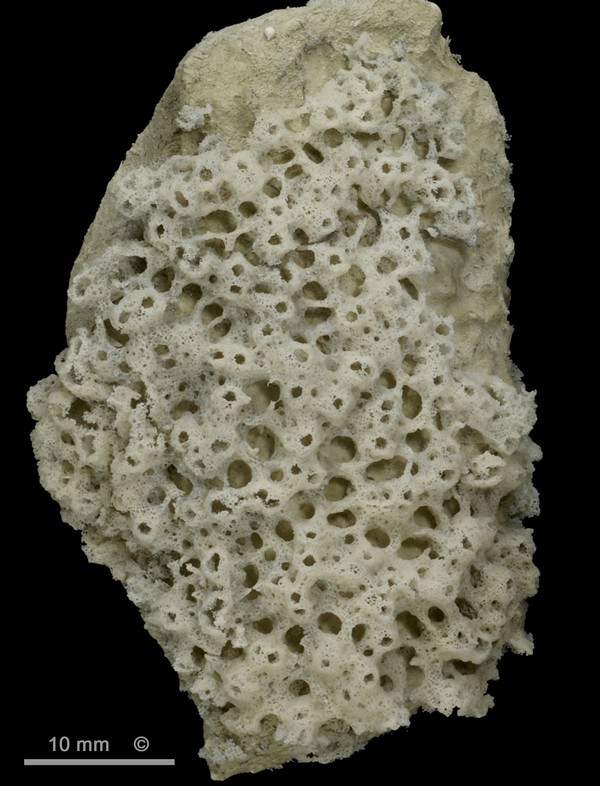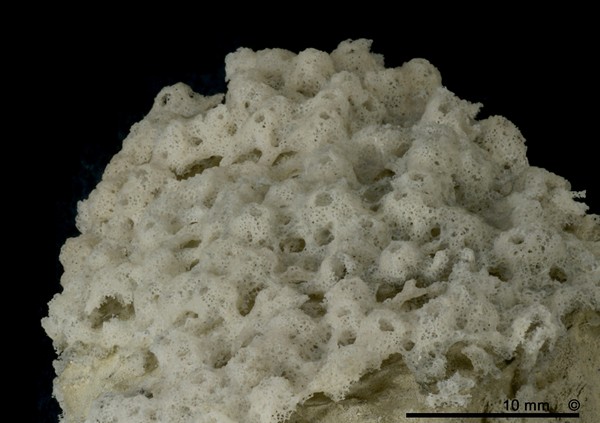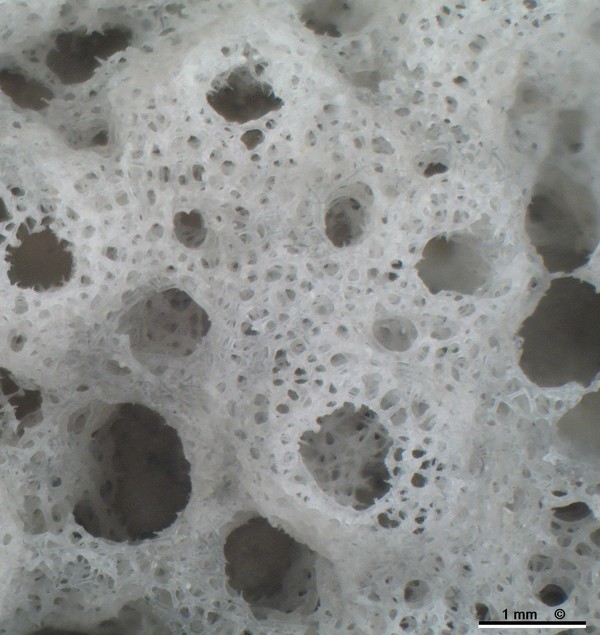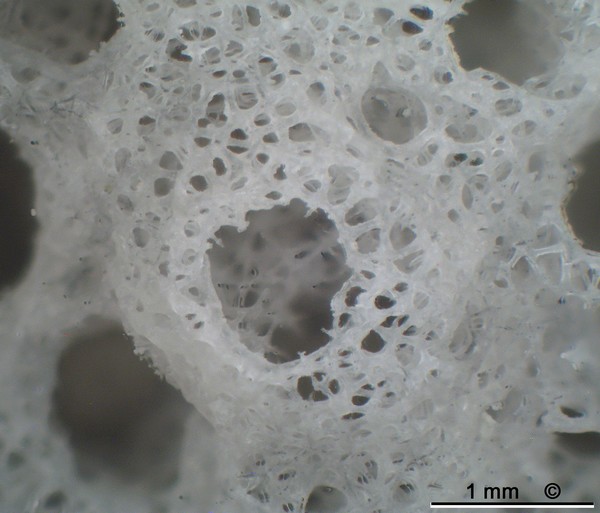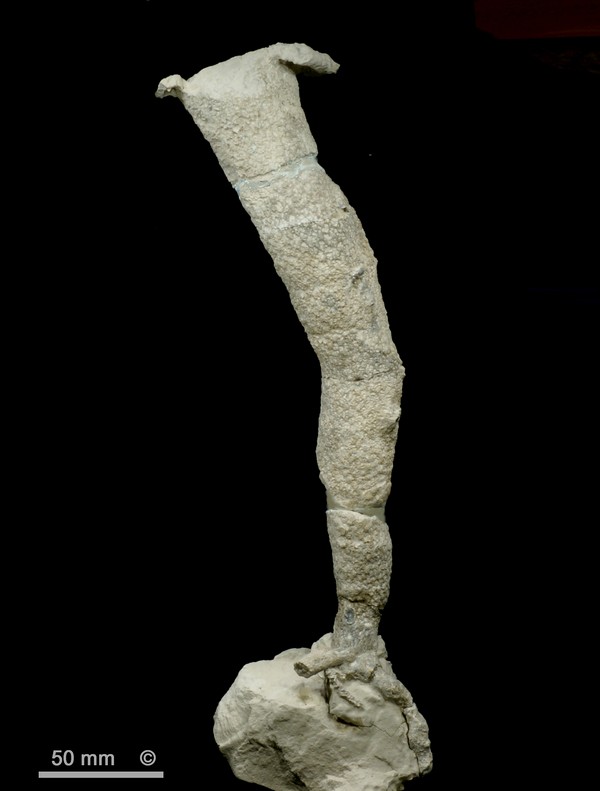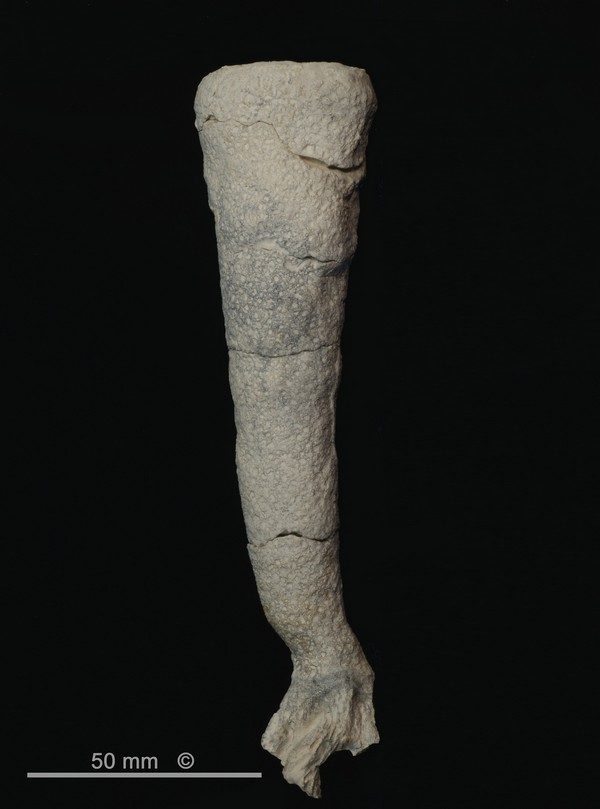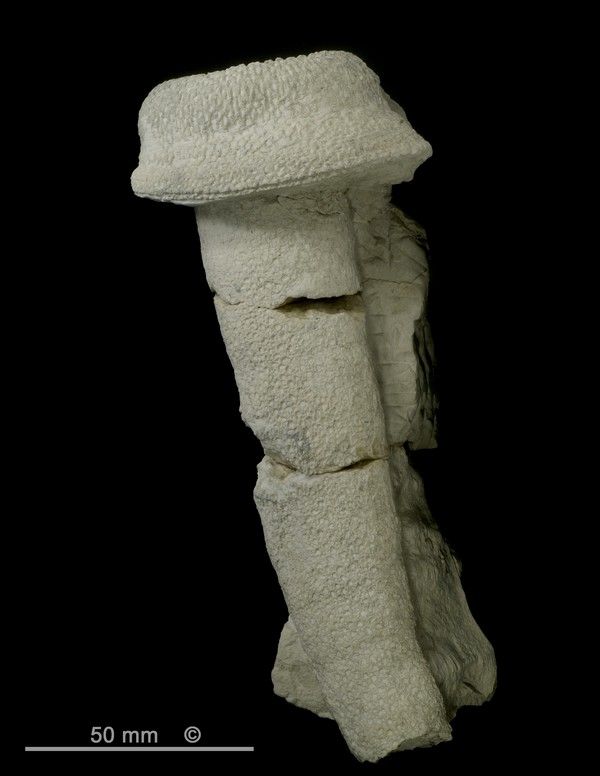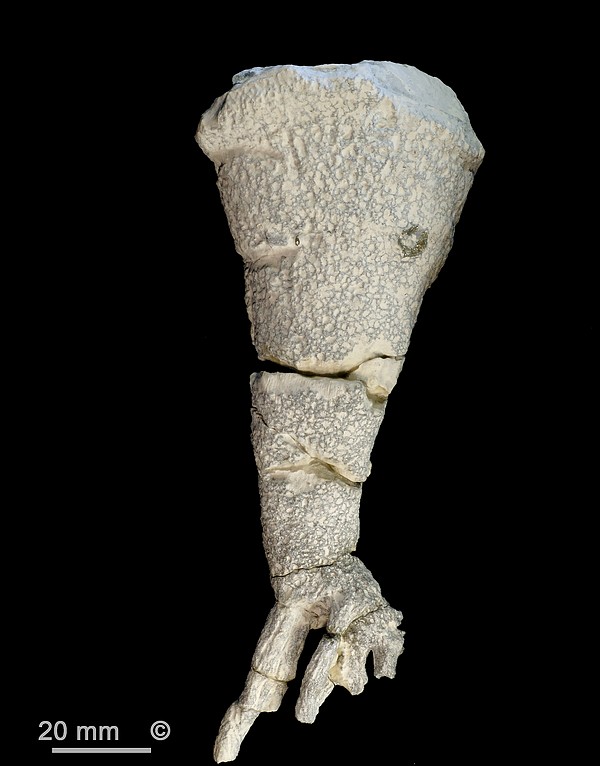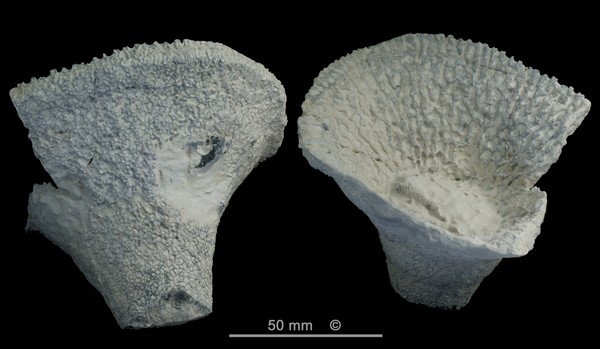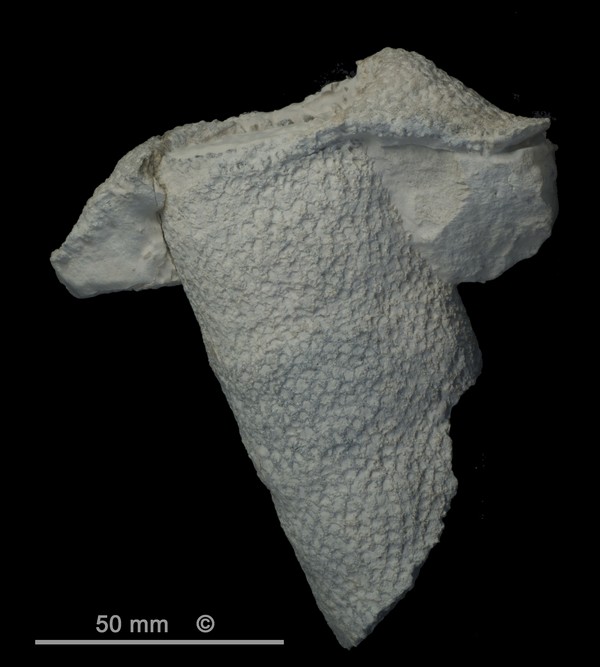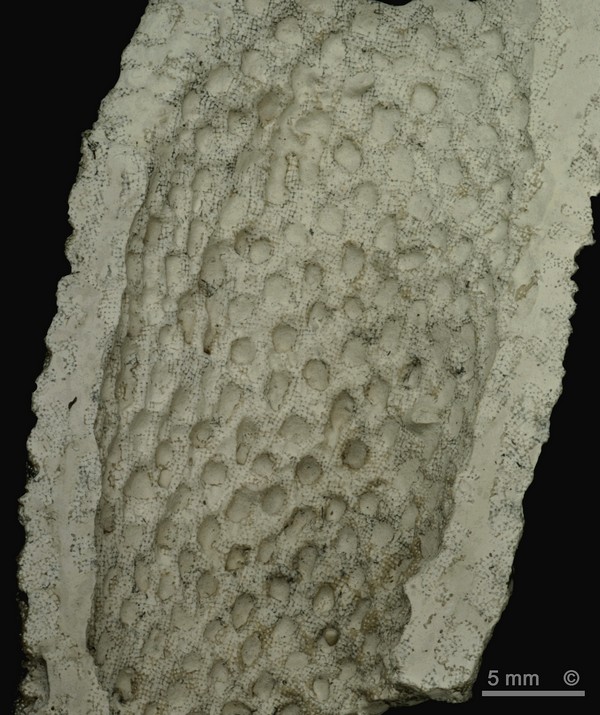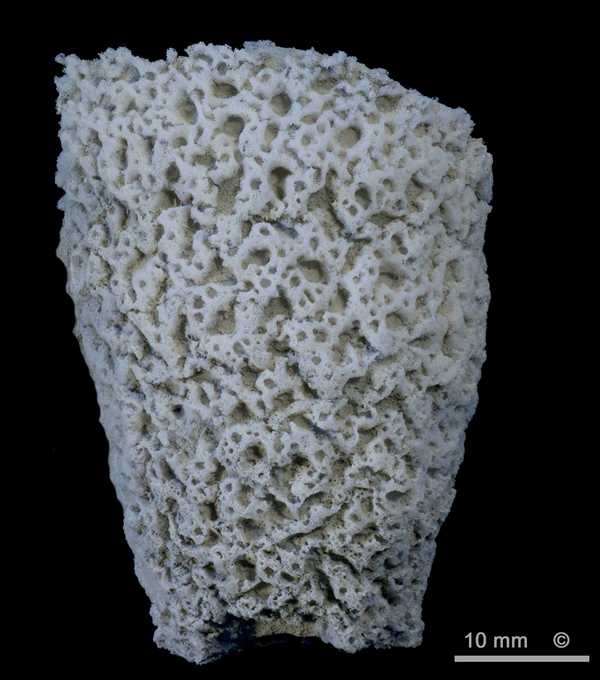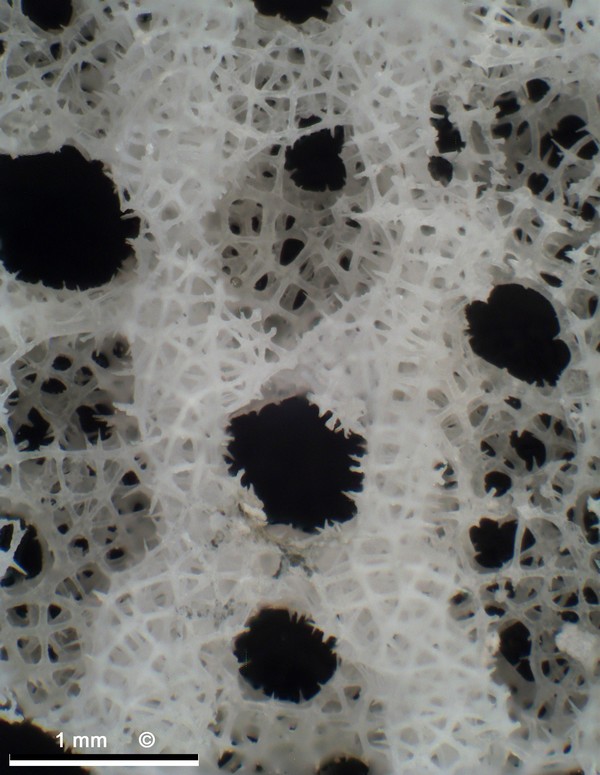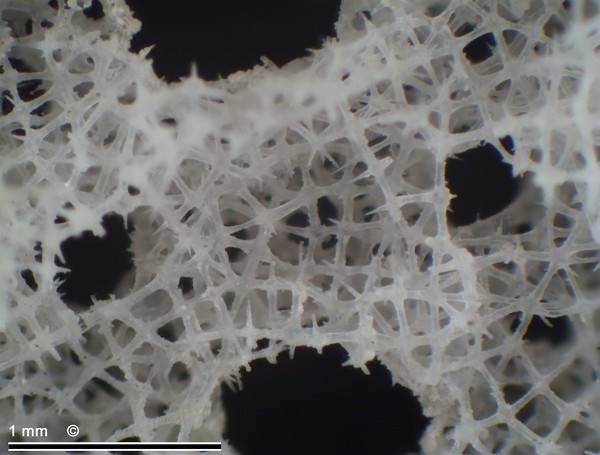
Figure 1 - Polyopesia angustata. Teutonia Nord, Misburg.
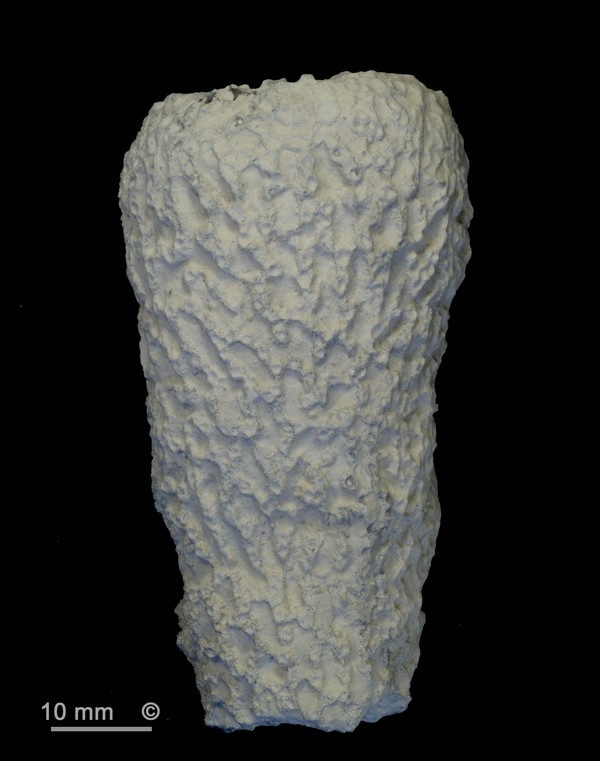
Figure 2 - Polyopesia angustata. Alemannia, Höver.
Top section with constricted growth margin.

Figure 3 - Polyopesia angustata. Teutonia Nord, Misburg.
Stem section with roots.

Figure 4 - Polyopesia angustata. Alemannia, Höver
Gastral side with postica.
Synonyms:
Hexactinella angustata Schrammen 1912
Hexactinella radiciformis Schrammen 1902
The nomenclature of the genus Polyopesia is confused and its taxonomic position is subject to dispute. (See below.)
Occurence:
Alemannia, Höver, Lower Campanian (senonensis zone). Rare.
Teutonia, Misburg, Upper Campanian (spiniger zone). Rare.
Figure 1 shows the most complete specimen of Polyopesia angustata found to date. Figure 2 shows a top-section with a growth margin, and Figure 3 shows a well preserved lower section with root stubs.
Considering all available material, typical individuals of Polyopesia angustata consist of a single tapering tube, some 200 to 300 mm tall and 20 to 40 mm wide, with a 6 to 10 mm thick wall. Senior individuals may develop a widened, trumpet-shaped top.
The roots are conspicuosly strong and are constructed from dictyonal hexactines. Near-end cross sections of the roots reveal several (5 to 10) longitudinal channels up to 3 mm wide.
The dermal surface consists of many irregularly disposed protruding wart-like (external) postica, each 1.5 to 2 mm wide and separated from its neighbors by about the same distance (Figures 1 to 3). Ostia are arranged in depressed positions around the postica and are thus invisible in unetched specimens.
The gastral (atrial) side shows (internal) postica with quite large (4 to 5 mm) oval apertures, which are vaguely arranged in quincunx (Figure 4).
